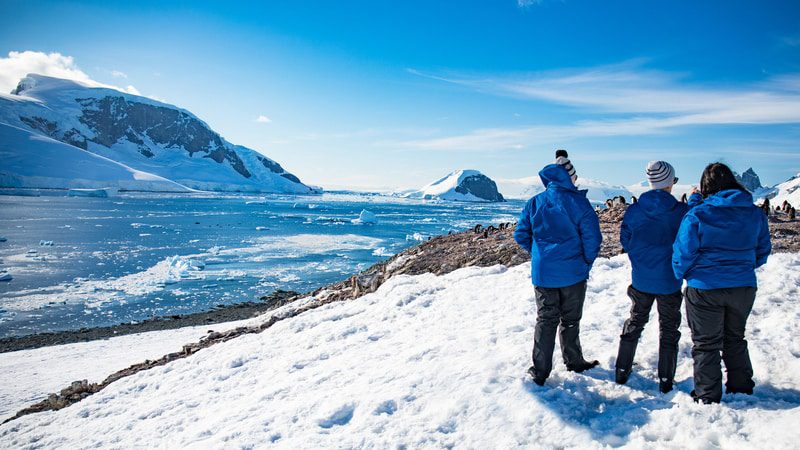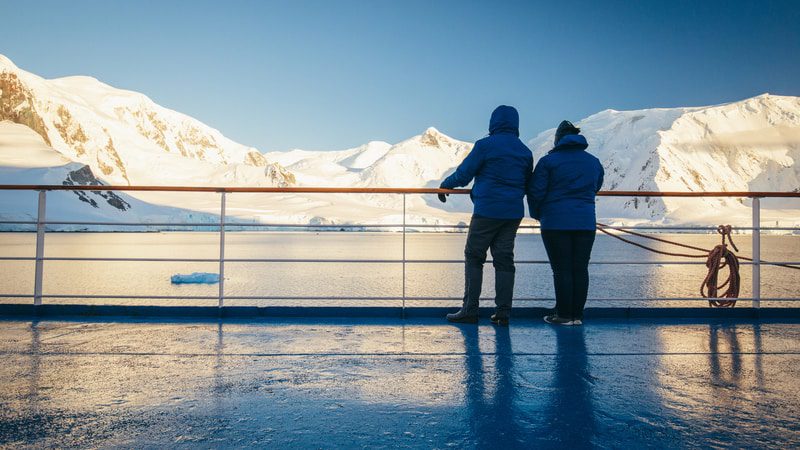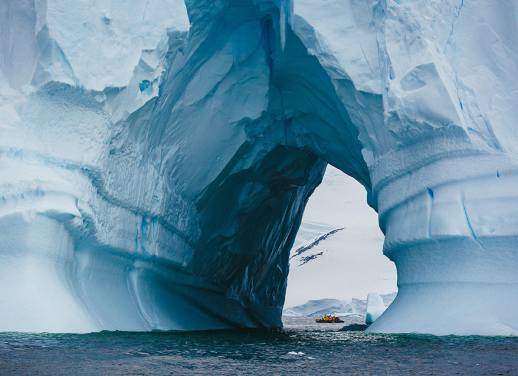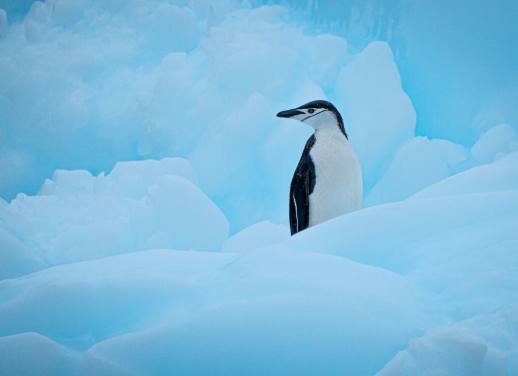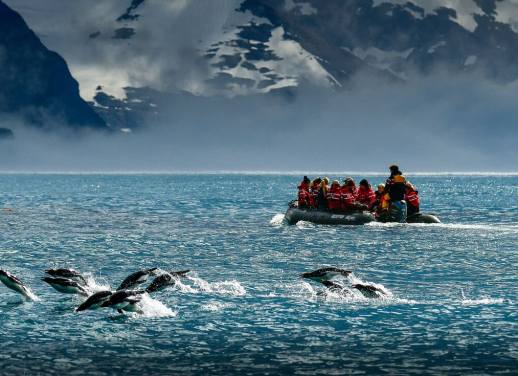There’s no need for alarm clocks on an Antarctic expedition. Each morning, we’re woken by a husky drawl of ‘Gooood morning, good morning’ through the Tannoy announcement system. It’s Solun, our expedition leader, welcoming a new day, updating us on where our ship has repositioned during the night, and providing an overview of the day ahead.
At home in Brixton, I am not a morning person in the slightest. I’m Hyde before 11am, and Jekyll for the rest of the day. So it came as a surprise that this became an enjoyable way to wake up; I was happily settling into life at sea, and the early starts that came with it.
My mornings on the Ocean Endeavour – our polar expedition ship with an on-board saltwater pool, gym, saunas, yoga classes, and a smoothie bar – became my favourite part of the day while I was on my 11-day Antarctic Explorer adventure. Too groggy and not quite ready for breakfast, I’d slip past the restaurant and choruses of ‘Morning Lynsey’, and ‘Hey Miss Kirk!’ from the friendly crew, and wander upstairs to the café instead. Flat white and camera in hand, I’d head for the upper deck for a refreshing hit of cold Antarctic air, and take some snaps of icebergs, birds, and the occasional humpback whale chasing our waves.
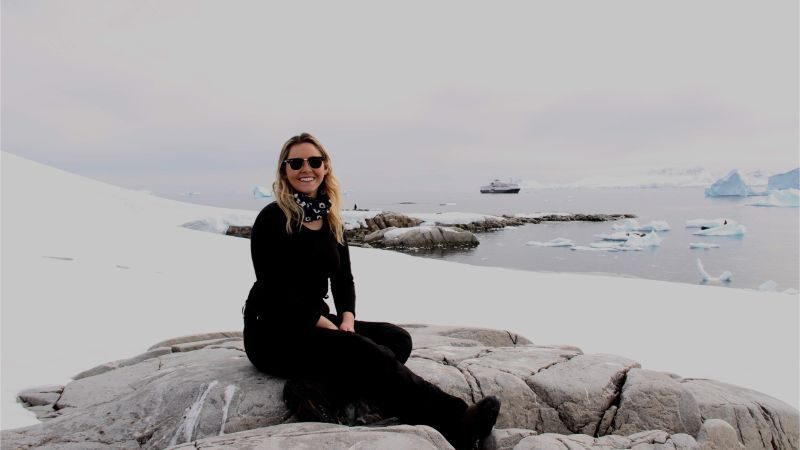
On day seven of our expedition, our wake-up call ramped up a notch.
‘Gooood morning, good morning Antarctic voyagers. There is a pod of humpback whales surrounding the ship. You DO NOT WANT TO MISS THIS. The upper deck is open.’
Even I got out of bed sharpish.
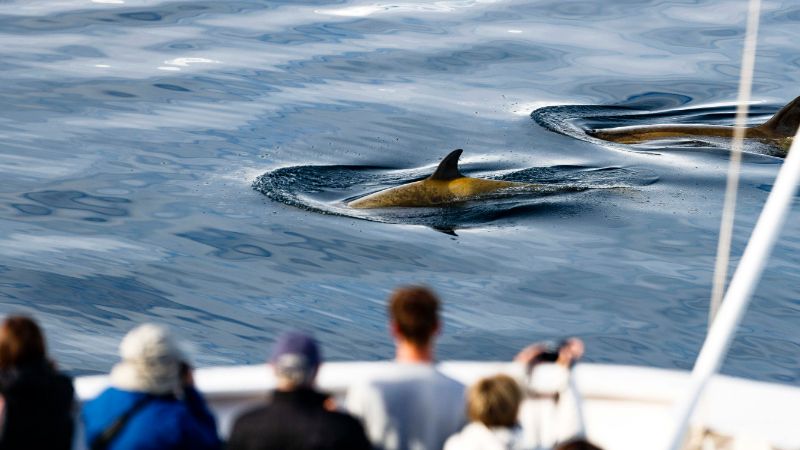
Seeing everyone rush outside from their rooms was comical. Hair everywhere, with jumpers half on, people marched unnaturally quickly along corridors (you’re not allowed to run on the ship), yelling directions at their spouses, ‘OUT HERE ON THE LEFT, I SEE THEM!’.
These are people who, just a few days ago, were coming to dinner with blouses and shirts on, neatly groomed. Now we can be found reading in the library, wearing tracksuits pants and feeling decidedly un-self-conscious with our unwashed hair and mismatched socks. New friendships have been made quickly; we stroll around the ship as though we’ve spent our entire lives at sea, chatting about where to find the best viewing spots. We’ve become a close-knit family, of 199 members from all around the world.
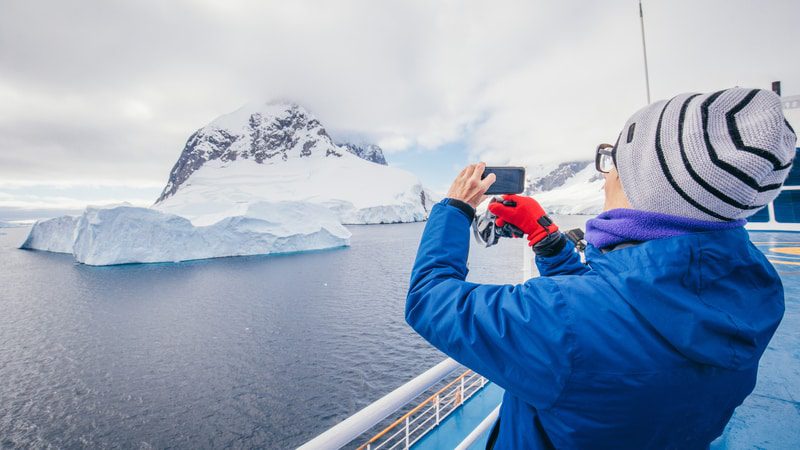
Once outside, I pick my spot. There’s room for everyone to have a decent view of the whales, and, now that we’re family, everyone shuffles over to let you squeeze in at the railing. We’re lucky; the pod of orcas are on the hunt, but it’s not so lucky for the penguin in their sights. The penguin’s on the nose of one of the orca for a while, ducking and diving and just out of reach; I’d never seen anything like it. I half expected to see David Attenborough pop out from the bridge with a small production crew and get in on the action.
And just like that, as quickly as they’d arrived, the whales disappeared beneath the waves, slapping their tails powerfully in their wake. If the whales were going to officially start their days, we should too.
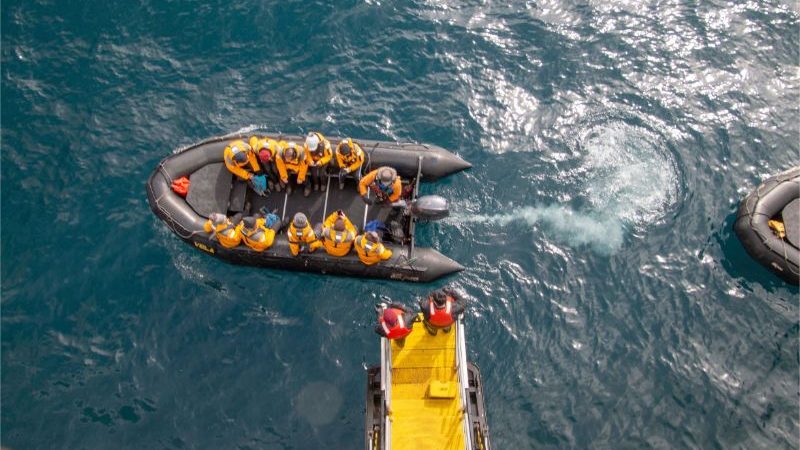
Today we’re heading out on the zodiacs. After a quick chat with some other passengers, and another coffee, we make our way down to the mudroom. When we boarded the ship a week ago, we were given beautiful warm jackets (to keep!), so we zip these up, pull on our boots and head along the gangway to the zodiacs. Getting into the zodiac is always fun; we’d been taught the sailors grip on day one and had become masters of stepping from the gangway to the zodiac like pirates in parkas.
I ended up in a zodiac with Colin, the Ocean Endeavour’s glaciologist. He sets off into the ice, touring around the bergs and explaining their various formations; my favourite insight was that the very small chunks of floating ice, that rise only about three feet out of the water, are called “growlers”. As the iceberg melts, trapped air escapes, which sometimes sounds like the growl of an animal. Slightly larger icebergs, rising up to four metres out of the water, are called “bergy bits”. These can be small icebergs in the later stages of melting, iceberg fragments, or pieces of floebergs or hummocked ice. Of course, we instantly dismiss Colin’s iceberg names – these can’t possibly be accurate – but when we ask the expedition crew to confirm it later that night, they do (much to our delight).
We spot a group of Weddell seals resting on a large float of ice and Colin turns the engine off. He grabs a paddle and gently rows us closer, so as not to disturb their slumber. The seals are wonderfully photogenic, and exceptionally cute animals that we dub ‘cat sausages’.
After our mini cruise through the ice, we head for Petermann Island. It’s a beautiful Antarctic summer’s day, and the water is as still as glass. We disembark, wading through the calm waters, and are free to wander around the island; various paths have been marked out by the expedition crew ahead of our arrival, to ensure everyone’s safety. I follow a path up the hillside, sitting down for a rest halfway up, and visit a penguin colony high up on a ridge when I get to the top.
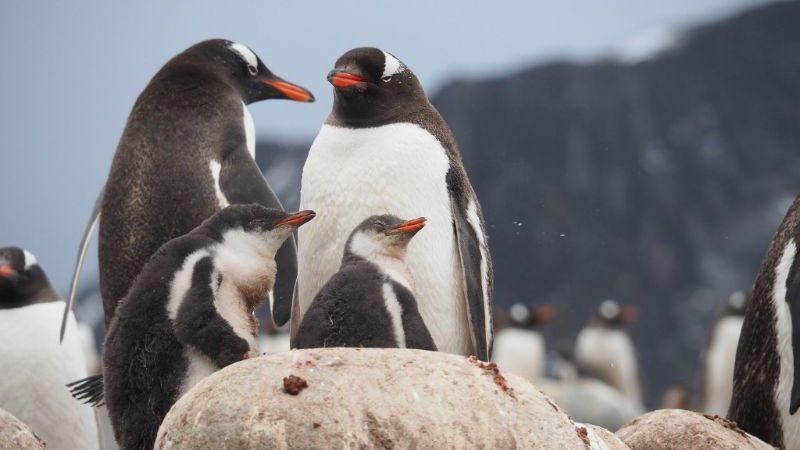 I’m on my way back to the Ocean Endeavour when an Adélie penguin suddenly bounces ashore. We had only expected to see Gentoos and Chinstraps, but had already been lucky enough to spot a Macaroni penguin. Spotting another bonus penguin came as a surprise to us and our onboard ornithologist Nigel, who was over the moon to see an Adélie, but explained that he may be lost on his way to his colony.
I’m on my way back to the Ocean Endeavour when an Adélie penguin suddenly bounces ashore. We had only expected to see Gentoos and Chinstraps, but had already been lucky enough to spot a Macaroni penguin. Spotting another bonus penguin came as a surprise to us and our onboard ornithologist Nigel, who was over the moon to see an Adélie, but explained that he may be lost on his way to his colony.
We return to the ship for lunch; the food on this expedition has been incredible (I still can’t figure out how everything from fresh fruit to salad stayed so fresh, even on the last day at sea).
Most days I’d settle down with a book (and another coffee) after lunch, but given I’m always up for a chat my reading sessions usually turned into long chats with other passengers, sharing pictures, and talking about anything and everything until someone would spot a Humpback breach from the window and we’d all end up outside again.
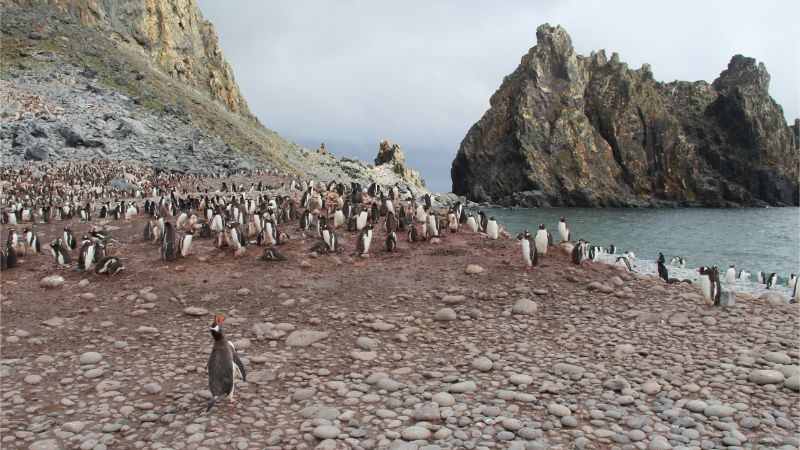
We’re making memories faster than our brains can compute them, and days seems like weeks. On our next excursion, we spot minke whales from the zodiacs. When we get onshore, I sit near a penguin colony, watching the chicks in various stages of life, and some eggs in the process of hatching. A flock of aggressive seabirds, known as skuas, circle overhead; most penguins successfully intimidate the birds enough to keep them away from their eggs and chicks, though we spot one parent who is not so lucky, as an egg is snatched by a fortuitous skua.
Dinner is served a la carte, and I order three courses – ravenous after an adventure-packed afternoon. I eat with some new Australian friends I’ve made, and hear that they spotted a leopard seal this afternoon. They shared some incredible pictures with me; I hadn’t realised how reptile like they look.
I’d heard that Antarctica will change you. That you could spend an entire Antarctic summer out at sea – more, even. In eight days, I’ve seen Humpback whales with calves, watching them breach while grown adults literally whoop for joy at the sight. I’ve watched penguins live and die, on their island colonies and out at sea. And I’ve made some wonderful friends (and had some very good wine). Tomorrow we head back across the Drake Passage to Argentina. And as I ‘cheers’ my new friends in the bar this evening, I quietly wish there was more time.
An expedition to Antarctica truly is the adventure of a lifetime. Explore our range of Antarctic adventures here.

